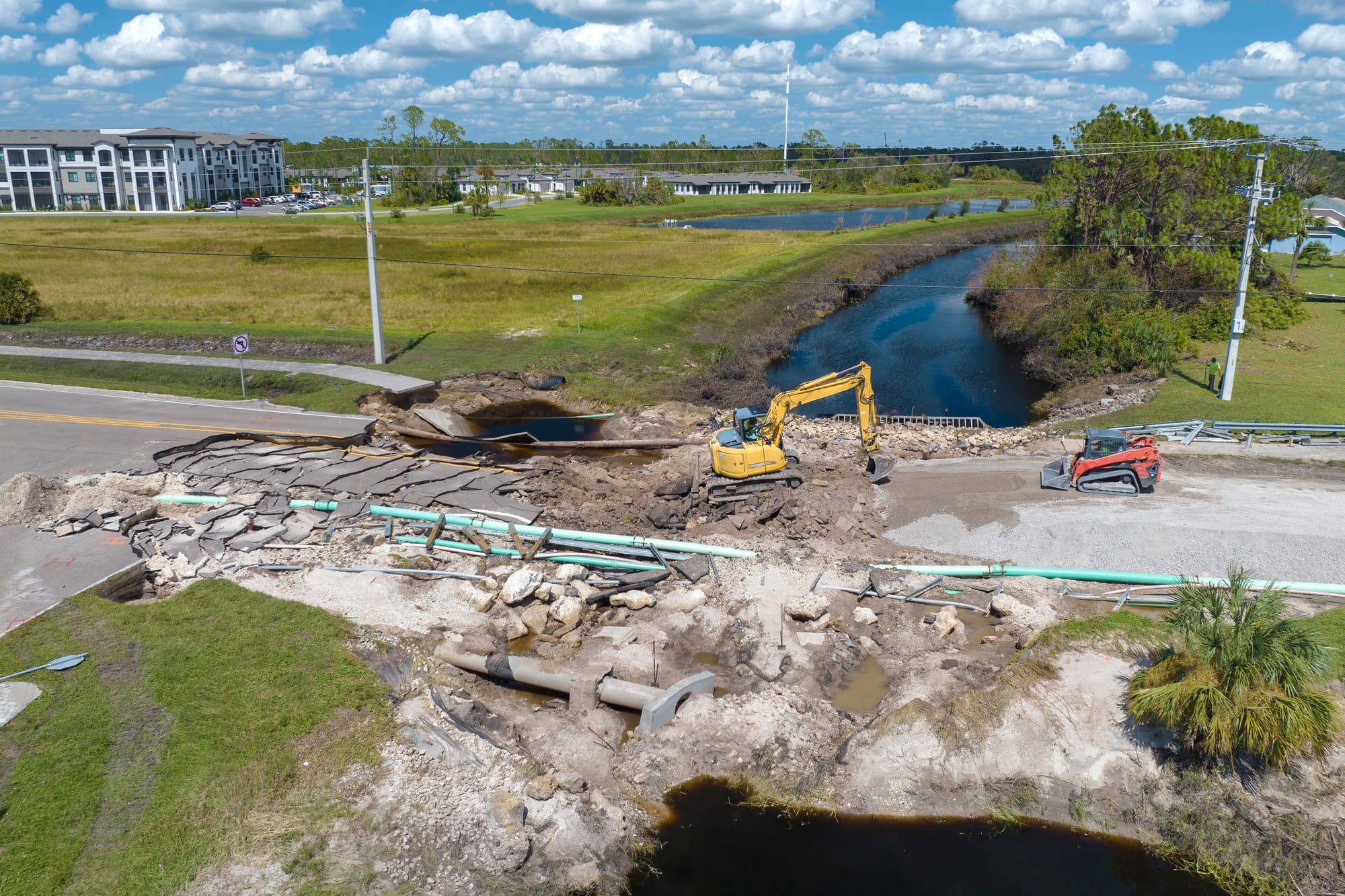Climate Disaster Recovery

Disaster recovery is the post-emergency phase aimed at restoring, rehabilitating, and rebuilding the systems, services, and well-being of affected populations. It extends far beyond physical reconstruction to include economic recovery, mental health care, community cohesion, and long-term risk reduction¹.
Dimensions of Recovery
| Sector | Activities |
| Housing and Shelter | Repairing damaged homes, providing secure temporary housing² |
| Infrastructure | Rebuilding roads, bridges, schools, hospitals, power and water systems³ |
| Economic Recovery | Small business grants, cash-for-work, job training⁴ |
| Health and Education | Restoring clinics and education systems, trauma services⁵ |
| Governance | Re-establishing public services, local leadership, legal identity⁶ |
Effective recovery requires a coordinated plan rooted in local needs and culture. It often unfolds in overlapping phases:
- Emergency recovery (1–3 months)
- Transitional recovery (3–12 months)
- Sustainable recovery (1–5 years or more)⁷
Building Back Better
The recovery phase is an opportunity to not only rebuild, but to correct systemic vulnerabilities:
- Replacing informal housing with formal, safer housing.
- Moving infrastructure out of flood-prone areas.
- Adopting renewable energy during power grid reconstruction.
- Strengthening land rights to reduce displacement risk⁸.
For example, after the 2004 Indian Ocean tsunami, Indonesia's Aceh region used recovery funding to redesign cities with improved road access, stronger homes, and coastal buffers⁹.
Financing and International Support
- Post-Disaster Needs Assessments (PDNAs) are now standard tools to estimate losses and prioritize funding.
- Key actors: World Bank, UNDP, EU Civil Protection, and bilateral donors.
- Recovery trust funds are increasingly established to pool international resources and ensure transparency¹⁰.
Local governments and communities must be involved in decision-making, especially in selecting beneficiaries for housing and livelihood programs. Recovery imposed “from above” often fails to meet needs or rebuild social trust.
Mental Health and Social Fabric Disasters cause trauma, grief, and long-term psychosocial distress. Recovery includes:
- Mobile counseling units.
- Community centers and rituals for collective mourning.
- Trauma-informed schools and workplace reintegration programs¹¹.
Social cohesion—often frayed during crisis—must be actively rebuilt through inclusive dialogues, participatory rebuilding, and support for local institutions.
Conclusion
Recovery is not just about rebuilding walls, but rebuilding lives. A successful recovery is inclusive, sustainable, and resilient, empowering communities to emerge stronger and more protected against future risks.
Footnotes
- UNDRR. (2022). What is Disaster Recovery? https://www.undrr.org
- IFRC. (2021). Shelter and Housing Recovery Toolkit. https://www.ifrc.org
- World Bank. (2021). Infrastructure Resilience. https://www.worldbank.org
- UNDP. (2020). Livelihoods in Post-Crisis Recovery. https://www.undp.org
- WHO. (2021). Continuity of Health Services After Disasters. https://www.who.int
- UNDP. (2019). Governance in Post-Conflict and Disaster Recovery. https://www.undp.org
- GFDRR. (2021). Recovery Phases Overview. https://www.gfdrr.org
- Build Change. (2022). Resilient Housing in Disaster Recovery. https://www.buildchange.org
- ADB. (2010). Rebuilding Aceh After the Tsunami. https://www.adb.org
- OECD. (2020). Financing Disaster Recovery. https://www.oecd.org
- Sphere Standards. (2018). Mental Health and Psychosocial Support. https://spherestandards.org
Photo: Getty Images licensed via SITE123
Damage assessment
Debris clearing
Infrastructure restoration
Housing reconstruction
Economic planning
Rehabilitation
Resilience against residual risks
Response evaluation
Insurance